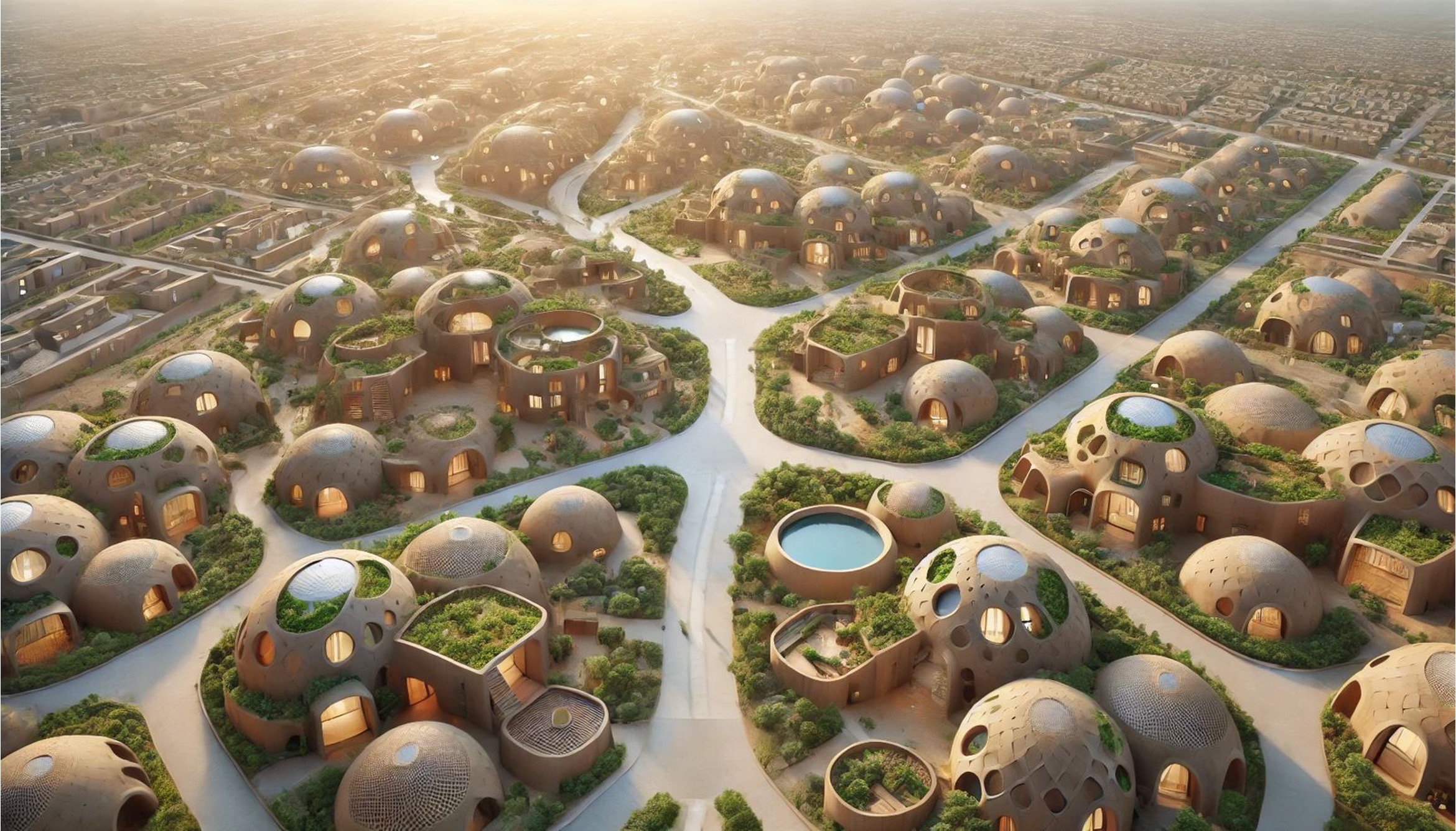Claysis
NEWS 2030 – A new way to build and to live
ARTIST // Bhagyesh Kawali, Marta Pancalli, Roshni Glency Dsouza, Dauren Yedres
CREATION DATE // 2025
About
In a world where 50 billion tonnes of sand are extracted every year, according to the United Nations Environment Programme (UNEP), the use of sand for construction and glass production has become a critical environmental issue. This massive exploitation negatively impacts biodiversity, freshwater and marine ecosystems, coastal regions, and natural flood regulation systems. It also threatens human infrastructure such as bridges, ports, and coastal defenses. The overuse of sand reduces the natural protection provided by shorelines, making societies more vulnerable to extreme weather events and climate-related disasters.
In response to this challenge, a group of four students from SRH University proposed a fictional but forward-thinking housing concept based on clay architecture. Their project envisions urban dwellings constructed primarily from clay, offering a sustainable alternative to sand-based building materials. This clay-based technology enables the development of homes that are eco-friendly, energy-efficient, and resilient to climate change. Designed to coexist with natural systems, these innovative habitats prioritize environmental respect while addressing urgent needs for sustainable urban living.
**insert photo 1 google drive**
The project, titled Claysis, imagines the rise of “New Clay Cities” by 2040 — urban centers built with bio-based, locally sourced clay materials that harmonize with nature rather than exploit it. These buildings are designed to be both climate-resilient and culturally adaptive, merging advanced technology with traditional knowledge.
Inspired by pressing global challenges such as soil degradation, desertification, extreme climate, water scarcity, and loss of biodiversity, Claysis offers a response through material innovation. Not only does clay reduce the dependency on cement and sand — which are energy- and water-intensive — it also supports local economies, traditional crafts, and regional identity.
By 2040, the world could witness eco cities — proof that innovation doesn’t always mean reinventing the future, but sometimes rediscovering it.
Through this workshop conceptualized and facilitated by Nicole Loeser, titled “NEWS 2030 – Sustainable Innovations”, students from engineering were encouraged to push the boundaries of their imagination and critical thinking to design sustainable solutions addressing the growing demand for — and gradual depletion of — one of the world’s most essential resources: sand.
More about the Art For Futures Lab here


